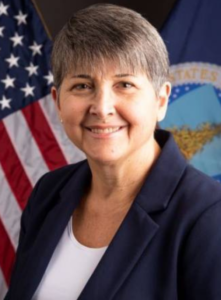
Authored by Sandra Eskin, Deputy Under Secretary for Food Safety with the U.S. Department of Agriculture’s Food Safety and Inspection Service
Congratulations to the Partnership for Food Safety Education (PFSE) on reaching your 25-year milestone.
The Partnership was formed to advance the development of science-based, consumer-directed messages to promote safe food handling practices in the United States. I thank this group for its continued dedication to protecting families across the U.S. from foodborne illness.
A lot has changed since 1997, the year PFSE was founded, and food safety has come a long way since then. At that time, the Food Safety and Inspection Service (FSIS) was in the process of finalizing and implementing HACCP regulations. This landmark approach to food safety underscored the reality that the companies producing meat and poultry products are primarily responsible for their safety. FSIS’ job is to make sure that companies are doing their jobs. We also need to make sure that consumers know and follow safe food handling practices to protect themselves and their loved ones from foodborne illness. That’s why the Partnership’s job is so important.
To innovate on meaningful food safety messages, PFSE draws its partners from the best in food safety education, including consumer groups, food industry associations, governmental bodies, and academia. Out of this effort, evidence-based food safety messaging has been created, and food safety experts have worked together to deliver coordinated messaging firmly rooted in science.
PFSE has been an indispensable part of USDA’s efforts to tackle foodborne illness. PFSE helps provide the tools necessary for informed food handling. We support and promote the PFSE safe food recipe guide to encourage consumers to follow safe handling practices before, during and after preparing a meal. We continually work with PFSE on reaching consumers. Additionally, we look forward to new and exciting partnership opportunities that can pave the way for our safe food handling messages to reach those at particularly high risk for foodborne illness and those people in the U.S. in marginalized or overlooked communities.
One challenge has been how we can better reach younger audiences. This group requires different outreach strategies than past generations, and we are looking at strengthening our presence on social media to deliver food safety messaging. Another focus is measuring whether consumers are changing their behavior as a result of our messages. Recent FSIS consumer research studies have revealed that handwashing remains low, so we need to find better ways to reach our audience with messaging that resonates deeply and promotes behavioral change. In the spirit of this partnership, FSIS is committed to making sure that our research benefits not only our own food safety education efforts, but also those of our public health partners.
Going forward, I wish PFSE continued success in its critical role of protecting consumers from foodborne illness by encouraging them to follow safe food handling practices.